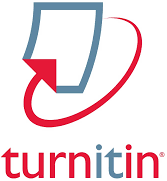Effect of Adding Calcium Dolomite (CaMg(CO3)) and Tohor (CaO) in Cultivation Media to Increase Moulting of Litopenaeus vannamei
DOI:
https://doi.org/10.29303/jfh.v4i2.4945Kata Kunci:
Calcium, Litopenaeus vannamei, Moulting, ShrimpAbstrak
Vaname shrimp (Litopenaeus vannamei) is a fishery commodity that is the largest contributor to exports compared to other commodities. The success of shrimp survival and growth cannot be separated from the molting process, which requires calcium. The calcium that absorbed from the cultivation media can play a greater role in the process of exoskeleton formation. Dolomite lime (CaMg(CO3)) and tohor (CaO) can be sources of calcium that can be added to cultivation media. The research method used in this study was a completely randomized design (CRD) consisting of 5 different treatments (A: without additional lime, B: 0.8 gr dolomite, C: 0.8 gr tohor, D: 0.3 gr dolomite + 0.5 gr of tohor, E: 0.5 gr of dolomite + 0.3 gr of tohor) with 3 repetitions. The results showed that the addition of lime at different doses provided a molting frequency ranging from 2.07 – 3.23 times during the 60 days rearing period, where treatment E was the optimum treatment. The absolute weight growth obtained ranged from 2.52 gr – 5.03 gr, with an absolute length of 5.25 cm – 9.11 cm. The highest survival rate during maintenance in treatment E reached 72%. The water quality conditions measured during the activity were alkalinity 135 – 146 ppm, Ca hardness 132.74 – 172.39 ppm, temperature 29.9 – 30.3°C, DO 6.3 – 6.5 mg/l, pH 7 .9 – 8.3 and salinity 32 -34 ppt.
Unduhan
Diterbitkan
Terbitan
Bagian
Lisensi
1. The copyright of this journal belongs to the Editorial Board, based on the author's consent, while the moral rights of the publication belong to the author(s).
2. The formal legal aspect of journal accessibility refers to the same Creative Common Attribution + Noncommercial + ShareAlike (CC BY-NC-SA), implying that publication can be used for non-commercial purposes in its original form.
3. Every publication (printed/electronic) is open access for educational, research and library purposes. In addition to the objectives stated above, the editorial board is not responsible for copyright infringement















